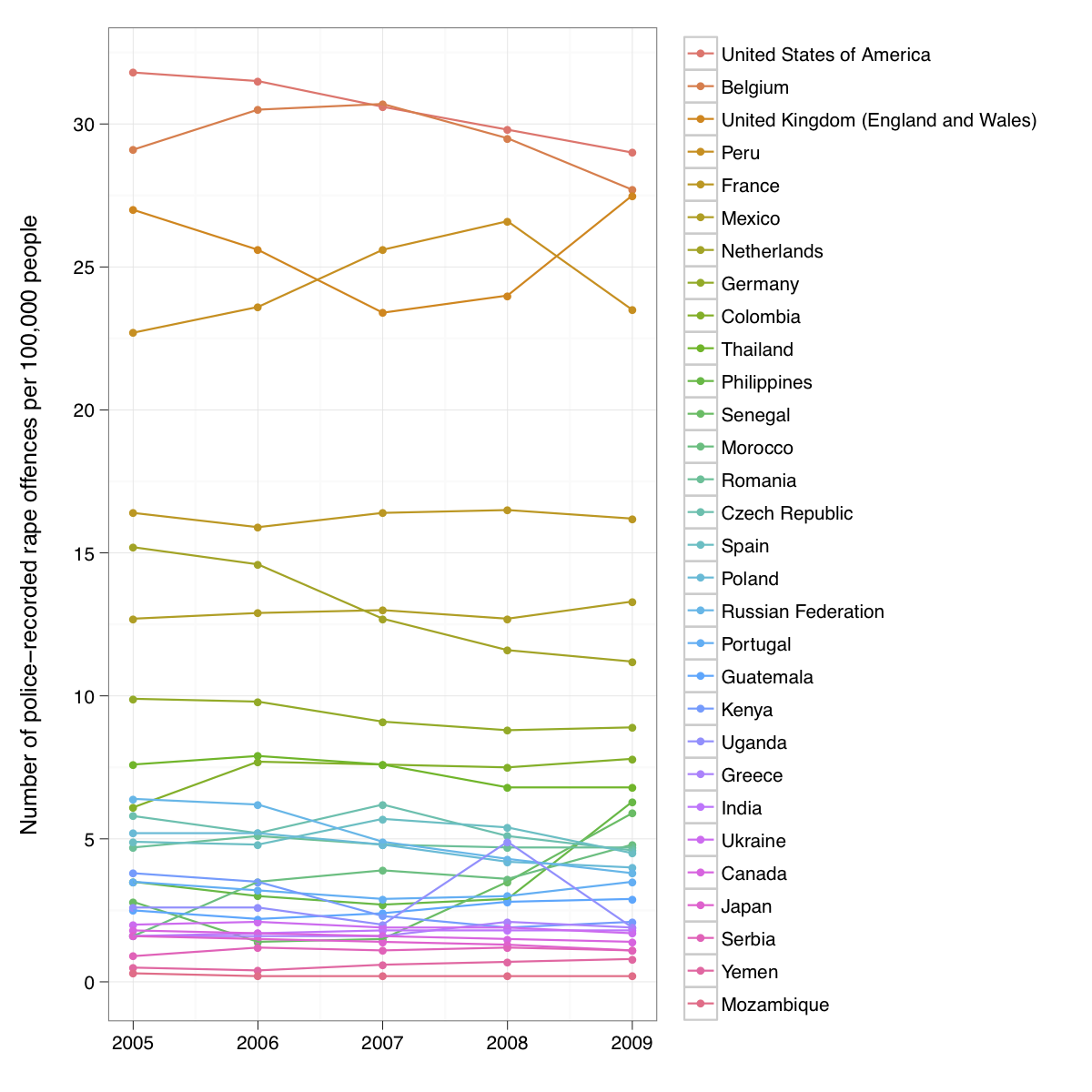Lies, Damned Lies, Rape, and Statistics

The vicious gang rape of a 23-year-old physiotherapy intern in Delhi last month is tragically just one of many attacks on women that occur every day in India. In 2011 alone, there were more than 24,000 reported rapes in the country, with likely many times that number going unreported. This horrific incident has spurred international outrage, including tens of thousands of protestors in the Indian capital city calling on the government to do more to ensure the safety of women.
“It is hard to argue that this recent atrocity stems from a uniquely Indian culture of violence toward women.”
In response to the brutal attack, the New York Times published an editorial deploring the significant increase in reported rapes in India over the last several years, concluding that “India must work on changing a culture in which women are routinely devalued.” While highlighting the 572 reported rapes in Delhi in 2011, however, the editors failed to mention that New York City — with 30% fewer people — recorded 1,420 rapes that year, more than twice as many as India’s crime capital. And New York is no exception: every large American city has a higher incidence of rape than Delhi. Internationally, the plot below shows that India, in fact, has one of the lowest rates of rape in the world, about 2 for every 100,000 people — comparable to countries like Canada and Japan. The United States, by contrast, recorded more than ten times as many per capita rapes — 30 per 100,000 — putting it at the top of the list. In short, it is hard to argue that this recent atrocity stems from a uniquely Indian culture of violence toward women.

One possible explanation for India’s relatively low recorded rate of rape is simply that the statistics are inaccurate. In the United States, it is estimated that only about one-third of rapes are reported. Thus, if the reporting rate in India were 2%, the country’s true per-capita rate would be comparable to that of the United States. Though that’s not an impossibly low number, I suspect underreporting is not the primary driver of the observed differences.
To be clear, India is no leader on women’s rights or safety. The gender inequality index — a measure based on reproductive health, empowerment, and the labor market — ranks India at 129th in the world. India’s performance on this measure, however, is comparable to the country’s overall economic and “human development.” For example, annual per capita GDP of $1,500 places India at 140th in the world; and based on the human development index — an aggregate measure of health, education, and income — India ranks 134th. To the extent that India fares poorly on gender issues, it performs no better when looking at the population at large.
Statistics, at its core, is fundamentally about making comparisons. While even a single occurrence of rape is deplorable, understanding and effectively addressing the problem requires placing the absolute numbers in context. Reiterating the sentiment expressed by the American embassy in India, the tragedy in Delhi should spur us to “recommit ourselves to … ending all forms of gender-based violence, which plagues every country in the world.”
Illustration by Kelly Savage.
